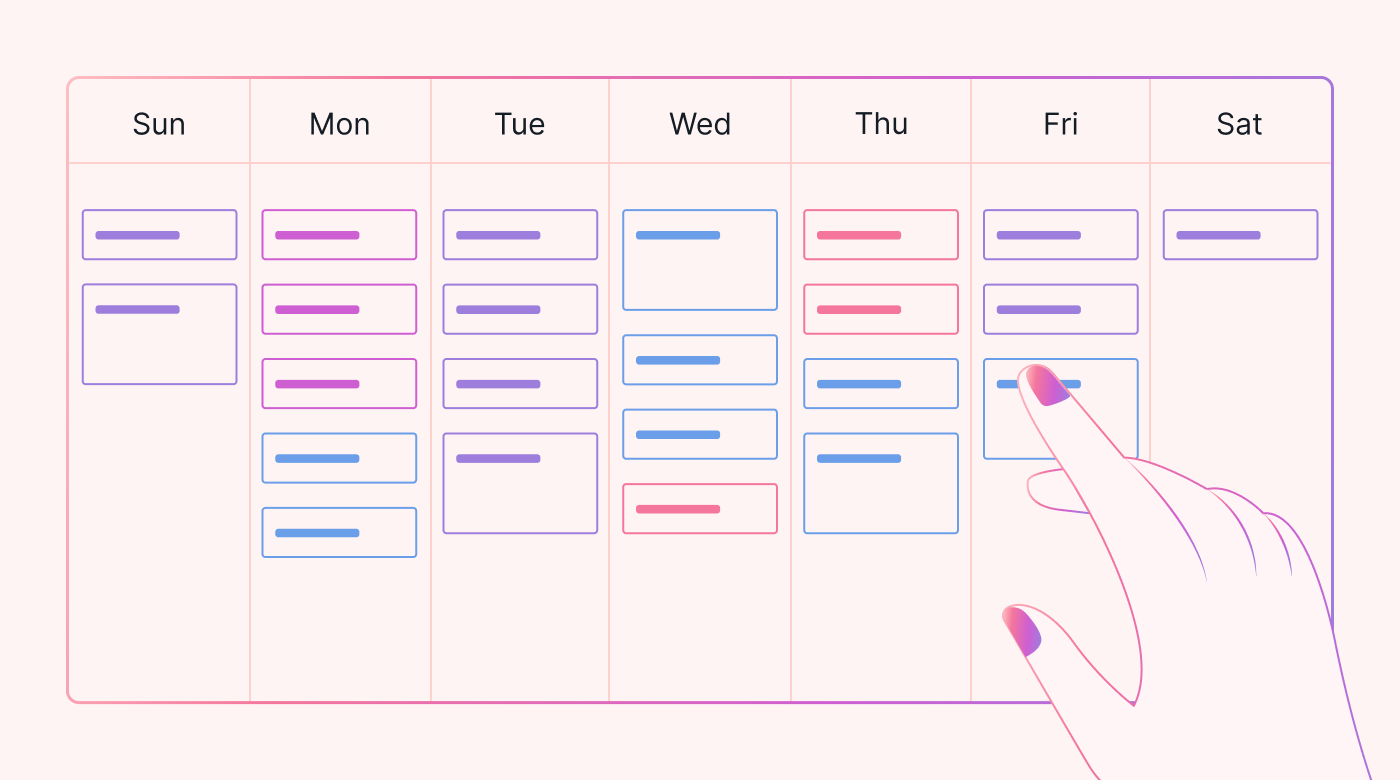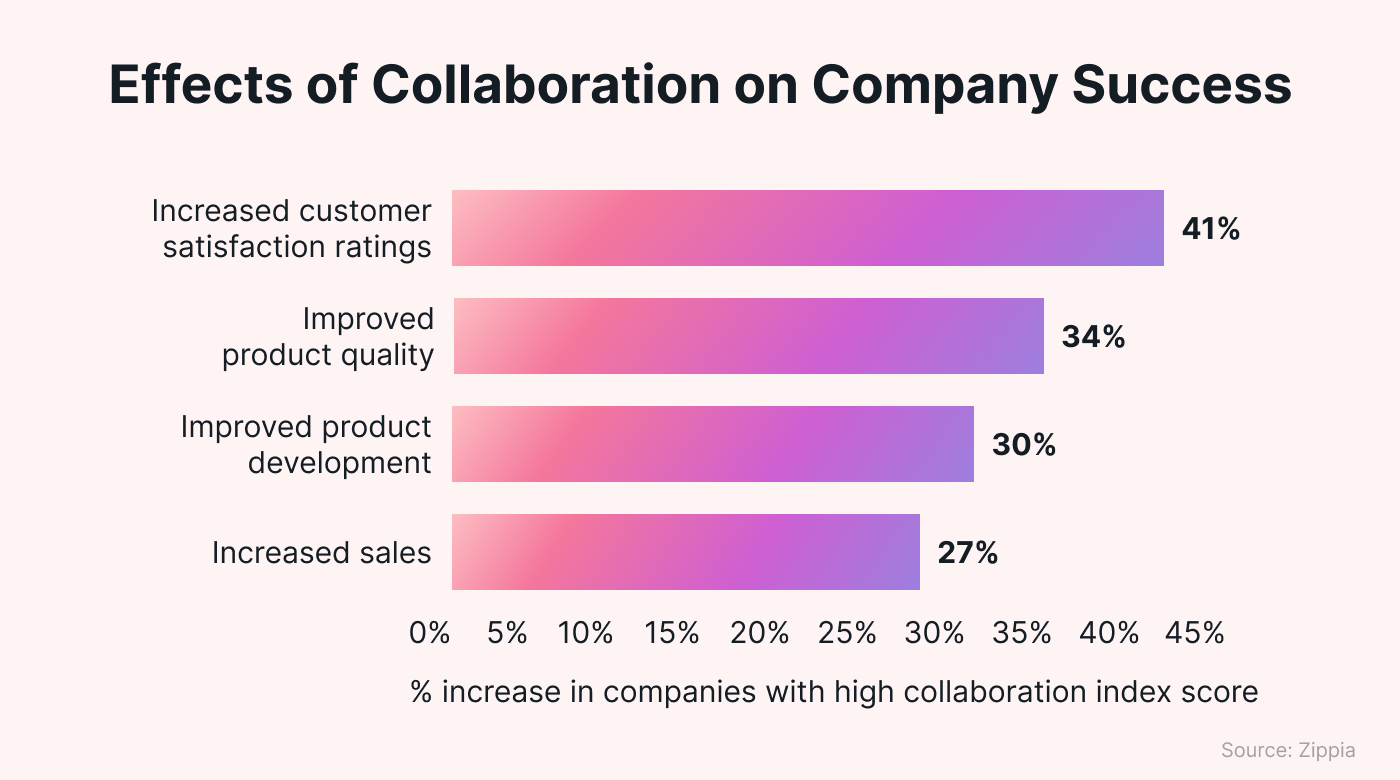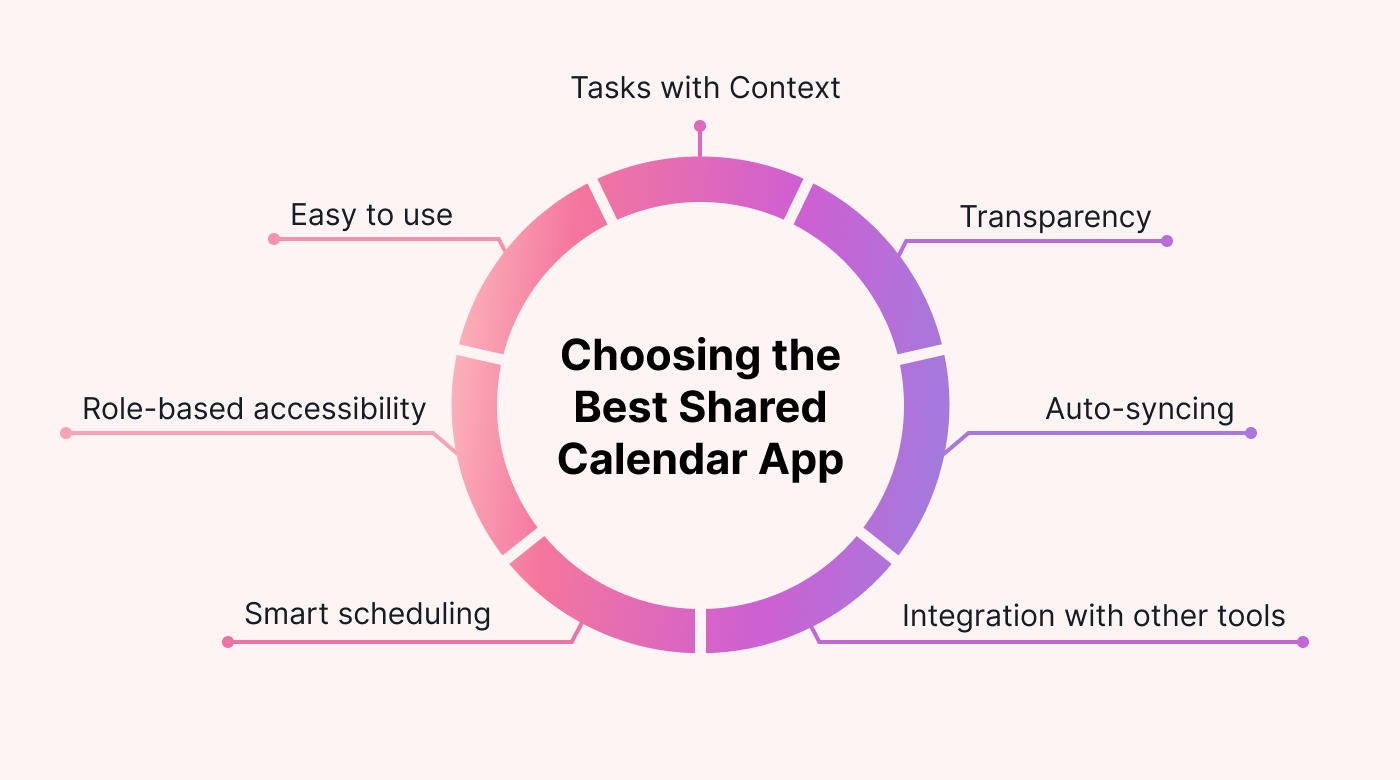Remember when companies would coordinate events in person, asking coworkers and employees to check their calendars? When employees would pull out their physical calendar or agenda and provide their availability?
The act of planning and delegating tasks for a project requires several in-person meetings. Some employees might end up with more jobs than they can handle, leading to delays and burnout. Business leaders needed personal assistants to keep them from overloading their schedules with meetings.
These were the good ol’ days that no one misses.
Enter the shared calendar.
Right now, many shared calendar apps are at anyone's fingertips. They range from simple and accessible to robust and scalable. Shared calendar apps are the perfect fusion of collaboration and time management. They minimize the headache of back-and-forth communications by reducing silos, and creating a bird's eye view of team-driven tasks.
This article will introduce a curated list of some of the best calendar apps. That way, you can easily pick the right one for your goals.
What is a shared calendar?
A shared calendar is a scheduling tool that allows multiple users to share crucial information among themselves for maximum teamwork. Generally, a calendar or shared calendar apps often double as agendas that you can view by day, week, or month. Unlike ordinary calendars, shared calendars are for teams or businesses to nurture collaboration.
Few businesses can function without a shared calendar. With the boom in remote work during COVID, shared calendar apps became necessary for employees to be on the same page even from a distance. In 2020, revenue from collaboration tools jumped 32.9%. Businesses gradually began to realize the value of tools that made it easier to connect with team members from afar. In 2021, the usage of digital collaboration tools (be it shared calendars or project management software) grew to 79% of workers.
Even now, be it remote or in-person teams, shared calendars have significantly reduced time-wasting activities and increased project fluidity.
 |
Shared calendar apps range from free tools most people have, like Google Calendar, which you can manually share with others to show one's availability. Other, more advanced apps can manage every step of a project, like Motion or Zoho.
Why do small businesses need a shared calendar?
A shared calendar is a must for any growing business. There are a few reasons for this, but the main one is collaboration.
Collaboration is the key to reducing inevitable errors in communication and time inefficiencies. Any tool that keeps collaboration alive keeps teams connected to the company's vision. This is clear in how the global collaboration market size is forecasted to nearly double (from $47.2 billion in 2021 to $85.8 billion) by 2026.
A shared calendar app does just that, because it allows their availability to be visible. It improves communication and productivity and reduces errors. Moreover, shared calendar apps are suitable for delegating tasks, managing many people, assigning tasks, and tracking project progress.
Because of the shared calendar's ability to create transparency, all teams know what they are doing and what their coworkers are doing at all times. Businesses can cut the employee turnover rate by 50% by investing in collaboration and team communication.
The advantages of a shared calendar
The necessity for collaboration is a given. However, shared calendars offer many more hidden benefits than streamlining team-based scheduling.
- Users can manage tasks and workloads by viewing everyone's availability.
- Since tasks and assignees can be viewed by all, there’s greater accountability.
- Shared calendars can integrate with other tools (like project management tools). You can manage your projects, stay on top of milestones, and have all the resources you need to complete the tasks.
- Shared calendars promote time management and simpler delegation of tasks.
- Shared calendars solve the issue of rescheduling due to inefficient communication.
 |
All these advantages make using a shared calendar a game-changer for any business, so long as you choose the right app.
What to look for when choosing the best shared calendar app?
When searching for the best shared calendar apps, holding contenders to high standards is essential. Many calendar apps enable users to share availability and schedules with others in some shape or form. However, not all of them are necessarily conducive to the success of a complex organization.
A quality shared calendar app must be robust enough to manage advanced task scheduling, context-driven information, and close-knit communication. To hit all these targets, look out for the following features:
- Easy to use: A calendar that no one uses is pointless. However, a complex app gets in the way of maximizing its benefit. Look for a shared calendar app with excellent usability and a quick learning curve.
- Role-based accessibility: Give employees differing access to the scheduling tools according to their role.
- Transparency: Employees' availability should be visible so managers can avoid overloading their schedule or inviting them to a last-minute meeting if they are busy.
- Share more info: When creating tasks, there should be options to add notes, documents, or resources all in one place.
- Auto-syncing: The app should be able to automatically sync across users' platforms when making changes or adding new tasks.
- Smart scheduling: A great shared calendar automatically schedules recurring tasks/meetings for weeks in advance
- Integration with other tools: A shared calendar app must connect and sync with other productivity tools.
 |
Considering these seven features will help you navigate the confusing variety of shared calendar apps. However, if you need guidance choosing the right one, check out the following options for some of the market's top calendar-sharing apps.
The 5 best calendar-sharing apps
Hundreds of shared calendar tools permeate the market. However, some of the most used, well-known calendar-sharing apps may serve your business needs.
1. Motion
Motion is a multipurpose calendar software with intuitive artificial intelligence software that goes further than the typical shared calendar app. At first glance, Motion’s calendar has everything for your scheduling needs: stick to deadlines, manage daily, weekly, and monthly schedules, keep track of team-based projects, and share crucial scheduling information.
The caveat is in its revolutionary automation. Motion does half the job by planning tasks for you. You must input key details like work hours, deadlines, time length, and priorities. Motion uses that information to create a schedule for you and your Team, time-blocking tasks the right way. To learn more about this, check out our article Why Traditional Time Blocking Doesn't Work.
With Motion, the time you usually spend building your schedule can be used on more critical business activities.
 |
Pros and cons
The significant part about Motion is the time saved from no longer planning your schedule. Motion's automation of those pesky tasks (organizing and moving events around, figuring out what tasks to do and when) frees up your time — productivity skyrockets because of this software.
The software in question is AI-powered, which makes the system incredibly intuitive and takes the guesswork out of calculating your schedule every week. AI optimizes your time in the best way possible, even as tasks are changed, added, or deleted. It's easier to follow along with a project's progress and assign tasks to different members in a way that works for everyone.
The only disadvantage is acclimating to the idea of an AI system making decisions for you. But in the long run, Motion helps businesses save so much time.
Pricing
- Individual plan - $19 per month
- Team plan - $12 per user per month
2. Google Calendar
Google Calendar is a simple, general-use calendar available at any time with the G Suite apps. Because of its usability, Google Calendar is a suitable tool to plan, schedule events, and meetings, and get things done. For businesses that rely heavily on Google Apps like Google Docs, Drive, and Sheets, Google Calendar is a no-brainer that connects to all those tools.
Pros and cons
The main benefit of Google Calendar is that there's a high chance most people have it. It's built for time blocking, allowing users to envision their tasks visually. Moreover, it's simple and free to use. It uses time blocking naturally, one of the best-known productivity and time management tactics. The clean user design makes it easier to visualize the daily, weekly, and monthly tasks ahead. Users can add daily tasks from the get-go to save them the trouble of adding them manually.
One downside to Google Calendar is that you must manually prioritize your to-do list, making it just like any other calendar. Change in plans? It's your job to do the manual recalculating to figure out how to salvage your schedule. For these reasons, Google Calendar could be more efficient. As a shared calendar, it offers minimal customization options for the individual's preferences. It lacks advanced project management functionality that makes the best shared calendar apps stand out.
Pricing
- Google Calendar is free to use for anyone
- Businesses have advanced pricing packages that come with more features.
- Basic plan - $6 per user per month
- Business Standard - $12 per user per month
- Business Plus - $18 per user per month
3. Zoho Calendar
Zoho Calendar is a team-based calendar open for anyone to use. Zoho is built for group projects for small to medium-sized businesses. Its multi-calendar interface allows users to keep track of multiple projects and events across different calendars. With Zoho, it's easier to gather all your tasks in one place and sync tasks between your other calendar apps and devices.
The Zoho Calendar's Smart Add functionality enables users to streamline the process of adding tasks or events. Instead of wasting time communicating with team members via email or in person, view the shared availability of attendees when setting up a meeting. The Zoho mobile app gives you access to your schedule and tasks wherever you are.
Pros and cons
Zoho is heavily involved in the project management side of things. That makes it a strong contender for businesses looking for an advanced shared calendar app.
Zoho includes API integrations with other tools, although other Zoho apps are prioritized. That said, it's possible to sync with your native calendar data.
Pricing
- Free to use
4. Apple Calendar
The Apple Calendar is the native platform for anyone with iOS devices. It's a system conducive to productivity with its smooth notification system and self-explanatory task-scheduling function. It allows the ability to add notes to tasks or events. In the case of rescheduling, all you need to do is copy and paste events elsewhere. Its drag-and-drop functionality makes it highly usable, and it syncs with iCloud to pass meeting invites back and forth.
Pros and cons
The main benefit of the Apple Calendar is its seamless integration with iPhone and other iOS apps, which are known for their minimalist design and quality organization.
At the same time, Apple Calendar requires that all group members have iOS devices. Moreover, it lacks video integration with familiar apps like Zoom or other native email apps like Gmail. This also makes it hard to sync with external calendars. Using Apple Calendar requires manually prioritizing tasks, which can drain your efficiency.
Pricing
- Free to use
5. Teamup
The sole value of this app is evident in its name: Teamup. Teamup Calendar is an easy-to-use, team-driven shared calendar application that thrives on transparency.
It offers a shared calendar's necessary features: the option to assign custom access to various users, tasks attached to context via notes or documents, syncing between other data sources, tools, and productivity apps, and several ways to visualize your agenda. All these features aim to eliminate data silos and put team projects on the fast track.
Pros and cons
The more positive facet of the Teamup calendar is its scalability. It's built to adapt to growing businesses and information complexity, so it'll be able to handle whatever you throw at it. It provides a wide variety of features that help with everything from project management to task organization and completion.
That said, Teamup requires a learning curve since the interface can get confusing. Users have found that not all information is readily available when using the app on other devices. Also, it falls short in the app integration department. Some businesses may need more support in what software they can use in tandem with Teamup.
Pricing
- The basic plan for small teams is free, but premium plans start at $10 monthly. Plans are available for businesses and enterprise-level companies, increasing in sub-calendars, limits, account-based users, and other perks. Overall, there are five total Teamup pricing plans, from free up to $105 per month (billed annually).
 |
Did you find the app that’s right for you?
A shared calendar app is no longer an option for small businesses. It would help if you had a vital scheduling tool to establish a smooth project management process. By having access to all team members' availability and tasks, you can better assign tasks and see a project through to the end.
The question now is: how do you choose the best shared calendar app?
All of the apps we listed here are excellent options. All of them improve schedule transparency, team collaboration, and productivity. However, an app that eliminates the manual scheduling process and planning is a winner.
Save those precious hours every week by arranging your schedule by hand. Use Motion to automate recurring tasks, time-blocking, and task prioritization.









